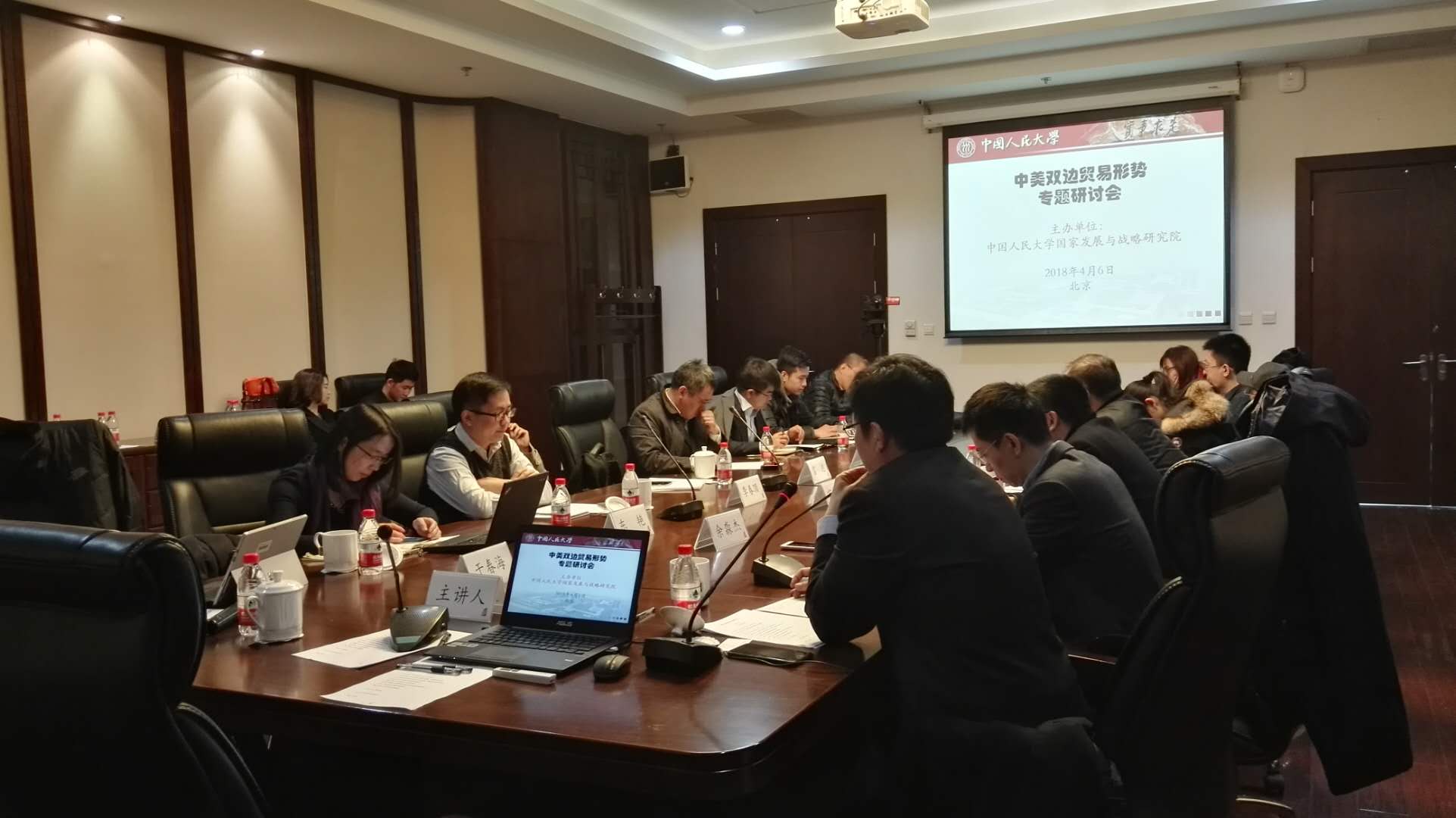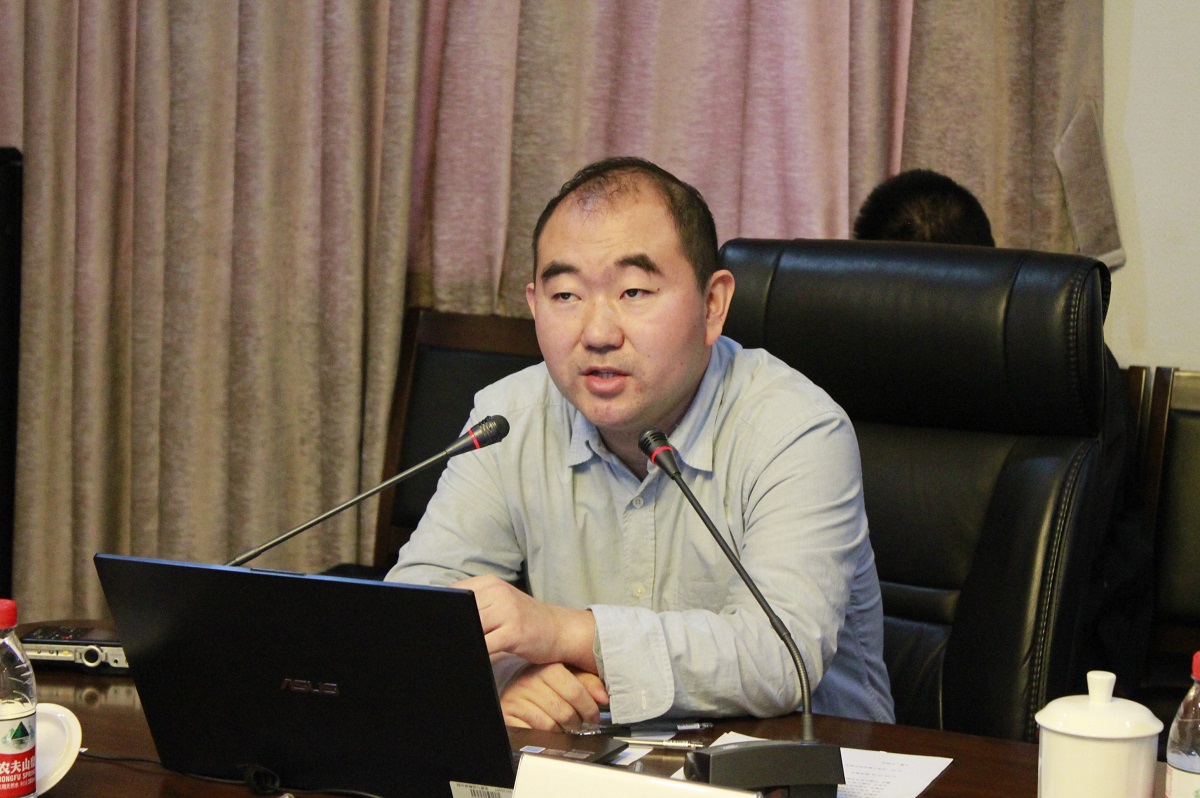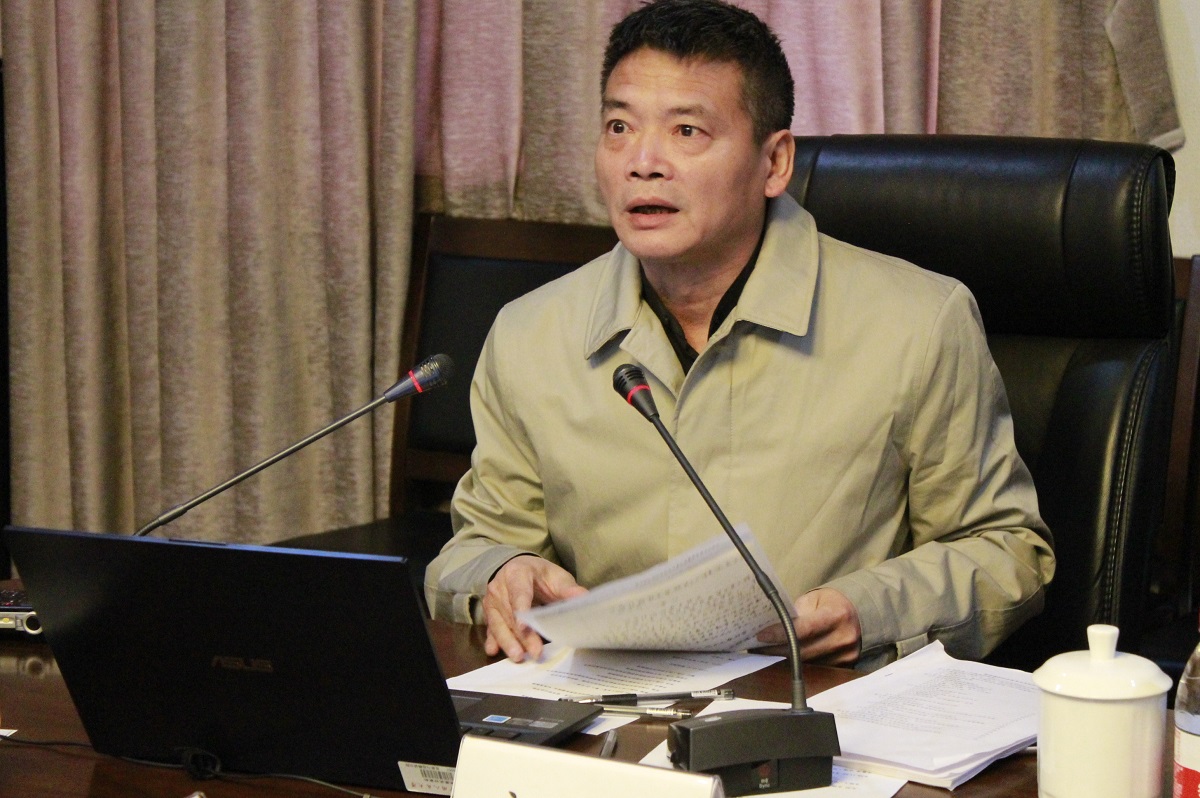 Research Update
Research Update
10
AprSince the inauguration of President Trump in 2017, trade frictions between China and the United States have gradually increased and intensified. After several rounds of disputes at swords' point between China and U.S. from the beginning of 2018, trade frictions appear to have entered a new substantive stage, and contradictions have been constantly escalating. Therefore, on the morning of April 6, 2018, National Academy of Development and Strategy (NADS) at Remin University of China (RUC) organized the “Symposium on Sino-U.S. Bilateral Trade Situation”. Prof. Liu Fengliang, Executive Dean of Graduate School, RUC, held the seminar.

In attendance were experts and scholars from Renmin University of China, Chinese Academy of Social Sciences, Peking University and other institutions.

Yu Chunhai, a research fellow of NADS, the Assistant Dean of the School of Economics, and Director of international economic department stressed that for Sino-U.S. trade friction, we should pay more attention to the long-term intentions of the United States. He pointed out that considering the short-term domestic political and social pressure, the U.S. government had the initiative to provoke trade disputes and the motives to implement protectionist trade policies; for long-term economic interests, U.S. would continue to actively insist on trade protectionism to explore the boundaries of rules and the bottom-line of its trading partners in order to promote and lead the renegotiation and reconstruction of international rules. Therefore, China needs to take targeted counter-reaction and retaliatory actions. At the same time, China must take advantage of the profit-oriented alliance opportunities by the differentiation of multilateral interests, and conduct cooperation and policies coordination under the framework of WTO or at bilateral and sub-bilateral levels that do not violate WTO rules.

Yu Miaojie, Deputy Dean of National School of Development, Peking University, believed that to response the possible Sino-U.S. trade war,China should:
a) Promote the regional trade cooperation and build the high-level free trade zone (FTA).
b) Enhance trade facilitation and global trade cooperation and to realize “the Belt and Road” cooperation within five years. At the same time, based on service trade foundation, China could reduce its service trade deficits, as well as reducing to import foreign waste and wasted metal.
In short, China must “prepare for the war, at the same time appeal to peace” and not hesitate to “accept small challenges for the sake of integral peace”. At the same time, China should actively promote trade globalization, and implement “the Belt and Road” cooperation, striving for the cooperation and win-win international environment.


Song Wei, a research fellow of NADS, a professor at the Institute of International Relations, RUC, believed that the fundamental reason why the United States provoked this economic conflict between China and the United States lay on its political and strategic considerations. China should pay attention to address both symptoms and root causes, and try the best to extend the period of China’s global strategic opportunity. Firstly, to solve the issues on the surface, we must insist on our own principled position with a moderate counterattack, more importantly, to seek common ground and minimize the level of frictions and conflicts. Additionally, to tackle the deep-rooted issues, we should continue to maintain the overall cooperation of Sino-U.S. cooperation in politics and reduce misunderstandings, also seek strategic common interests. From the Chinese perspective, we must resolutely oppose unfair competition, at the same time, also strive to improve ourselves and continue to deepen internal reforms and open up to the outside world.

Li Chunding, an associate researcher at the Institute of World Economics and Politics Chinese Academy of Social Sciences, pointed out that according to research results, U.S.’ trade war wouldn’t pose a threat to China, on the opposite, China would fully tolerate. Chinese government’s countermeasures as retaliation on the equal scale were necessary to be taken which could effectively fight back the United States. The Sino-U.S. trade war was a lose-lose game which implies that the U.S. cannot make profits from it. Mixed tariff and non-tariff trade wars could counter the United States more effectively. It would rather say that an "American dream" in terms of achieving U.S.’ economic interests through trade war actions regardless the WTO rules unilaterally adopted by Trump’s administration.

Wang Xiaosong, research fellow of NADS, a professor at the School of Economics, RUC, concerned that the current trade war between China and the United States had not yet started and the current confrontation could only be called as trade friction. Now both parties still had the motivation to negotiate. The greater chance existed in the negotiation for agreement on behalf of both sides. China might make some concessions in the areas of market opening and intellectual property protection, so as to resolve the contradictions between two sides and make bilateral trade between China and the United States to promote healthy development and maintain the current mutual-benefit situation. As for the solution, Prof. Wang believed that China should firstly initiate negotiations and communicate to resolve the frictions to the maximized level. Secondly, China needs to expand the level of deep-opening and strengthen the protection of intellectual property rights, etc., in order to promote the reform reversely in the way of opening-up. Thirdly, China should explore the new market and implement the market diversification strategy. In addition, improving the ability of research and innovation and strengthening the autonomy of technological upgrading is also necessary.

Lei Da, a research fellow of NADS, a professor at the School of Economics, RUC, pointed out that the trade conflicts between China and U.S. embraced the nature of perdurability and severity. Its perdurability demonstrated: First, the U.S. strategic adjustment included one purpose to contain China. Second, the factors that the United States wanted to change lay at a systematic level which would affect U.S. strategic development. Third, though China had made great efforts, the current coordinated results were not satisfied by both parties. Fourth, most importantly, the current conflicts couldn’t be coordinated under the scope and framework of the current international order. Fifth, the differentiation of U.S. domestic economic interests caused by globalization rolled as the most fundamental reason for the trade conflict. Prof. Lei believed that there were still grounds and space for cooperation in many areas such as high-tech and finance except for the games and conflicts between the two major powers and gaps were maintained between the different interest groups to contain China in the United States. Therefore, we could change the way of negotiating with the U.S. and the emphasis coping in the real tasks.
